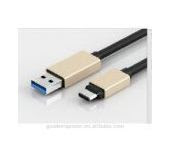USB is found in computers, tablets, mobiles, laptops, electronic equipment, modern gateways, servers and in many electronics devices. There are several versions of USB evolved over a period of time like all communication interfaces. Among them USB2.0 might be getting older now with USB3.0 coming up in the new electronic devices but it is most widely used communication interface in the embedded world. For the designer information, USB2.0 is called high speed USB and USB3.0 is called Super speed USB. USB2.0 operates around 480Mbps speed whereas USB3.0 operates at a maximum of 5Gbps speed. The following are the most important considerations for a layout engineer to consider before jumping into the layout activity.
- Stack up - with indication of USB signal routing layers
- Impedance controlled routing
- Trace width
- Trace separation
- Termination resistor placement
- Trace length
- Grounding considerations
- Supply filtering
- Other EMI/EMC considerations
- USB controller placement
- Layer splits and any voids
USB uses differential signaling for data transmission and all the above points are to be thoroughly listed for the routing and analyzed in depth before starting the routing. Whatever may be the routing techniques involved, maintaining the given signal quality is the ultimate goal. Let us look in this article the routing guidelines for the high speed USB.
- Route the differential signals with as smaller lengths as possible.
- Place the termination resistor as close as possible to the origin of USB signals.. In most cases, host is the originator, so, keep as close as possible to the host.
- Proper length matching to be achieved with the USB signals. This meant two traces D+,D- should have same length. (mismatch must be < 150 mils)
- Signals should have a continuous ground plane to maintain proper impedance, USB signals should always be routed as impedance controlled.
- Never route the USB signals under clock generators, crystals, oscillators.
- Ensure proper separation between USB differential signals during the break out or terminating to the connector. the spacing between the signals determine the impedance.
- USB signals should not cross any power/ground splits. If they cross that enables the return path to take a longer route which is like increasing the ground loop causing necessary signal integrity issues.
- Route the USB signals in a strip line topology. This meant that they must be routed in the inner layers to avoid any EMI issues in the system.
- While routing in the inner layers, take care that there are minimum vias. As the number of vias increases, impedance mismatch occurs and hence reflections leading to signal degradation.
- Avoid right angle bends at the corners, this causes reflections. Have a smoother routing with < 45 deg routing near the corners.
- USB signals should have sufficient spacing from high speed clocks and periodic signals to avoid any signal coupling.
- USB signals should not have any stubs. Stub at any point causes impedance discontinuity. Generally, for testing signals people tend to have a small stub with a test point. In such cases, don't have a stub more than 100 mils.
- Route the signals away from the board edges to avoid unnecessary coupling with the loose cables surrounding the system.
- Route signals with 90 ohms differential impedance as per USB standard.
- Follow the trace width specified by your manufacturer for achieving the USB standard impedance.
- Common mode choke must be placed as close as possible to the USB connector. Common mode chokes are used to filter common mode electromagnetic interference (EMI) currents without de-rating under high currents and without causing signal degradation.
- Effects of Split plane crossing can minimized by having stitching capacitors near by.

















